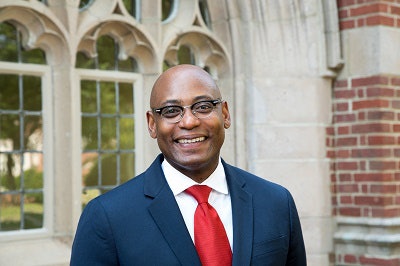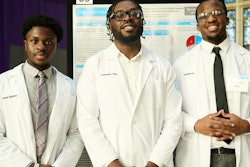“Work-life balance” is a widespread challenge, one originating in industrialization, the marketplace, and the reinforcement of public versus private spaces. Work is a place for the outer-self (Bonnerup and Hasselager, Love and Loneliness at Work), where no one wants to hear about your inner-struggles (e.g., that relationship that you just ended), beyond polite gestures.
Not only is this “balance” between work and life challenging, but it also creates profoundly false impressions that are harmful to individuals. In the long run, relationships can be damaged and institutions undermined. We come to resent the workplace’s strictures. The workplace culture that develops can detract from our sense of equilibrium.
 Dr. Patrice Rankine
Dr. Patrice RankineRather than work-life balance, for the new year attention must be paid to the ongoing integration between and among ourselves, our many identities, and the institutions and communities to which we belong. How we show up at work (or anywhere else) is dependent upon our deep awareness of (and mindfulness toward) psychodynamics, the flow between and among people, pasts, and organizations. Because the expression (or repression) of our true self can backfire in the workplace, this year let’s resolve to being more integrated people, a more mindful and tangible goal than finding that elusive balance. Allow me to explore the resolution.
The self/personhood. I inhabit a body, the weight of which has varied by 10-15 pounds over the course of the past year. The variability results from stress, levels of exercise, diet, and so on. In this general way, my body is no different from yours. The cliché, of course, exists: “Take care of yourself.” But how attentive are we to exactly what this means? How are our bodies — our diets, exercise, stress levels, and rest — affecting how we show up, whether at work or anywhere else in life?
For example, the other day I had a quick medical exam for an insurance policy application. I knew that I was supposed to fast up to 8 hours before the exam, which I did, but I neglected to read the instruction to avoid fried foods or foods high in sodium in the 48-hour period leading up to the exam. The day before, I had lunch at my favorite restaurant. My blood pressure, usually normal (especially when my weight is what it should be), was alarmingly high when the nurse checked almost 20 hours later, at 8am.
During the work week, I am focused on productivity (on my grind), so I am certain that had it not been for the unusual circumstance of a midweek health check, I would not have known the impact that a single, fried and high-sodium meal — albeit vegetarian — would have. Resolving to be a more integrated person means being aware of and attentive to our bodies.
Identity. My body, marked as male and darkly hued, comes with certain cultural “entanglements” (Appiah, The Lies that Bind). In America, some of these entanglements include race and gender. Were I to live in the Middle East, ethnicity, religion, and gender might be more salient. Under the work-life balance paradigm, I have for much of my professional career repressed these factors in workplace interactions. My approach has evolved, however, because professional space is not a tabula rasa for interpersonal interactions. Recently, I wrote about the dynamics between minority and female bosses and those with whom they work. This January, my professional organization invited Robin DiAngelo (White Fragility) to open our proceedings, one year after the public meltdown that revealed a great deal about so-called professional space.
DiAngelo led with two questions, aimed at revealing Whiteness: What is your first memory of race? Who was your first non-White teacher? I recalled a group of men shouting “monkey” and other racial slurs at my mother and my nine-year-old self in Brooklyn, New York. I recalled my first Black teachers, who were classicists. (Shout-outs to Gail T. Smith and Mervyn Keiser.) How these experiences have informed my identity, how yours inform yours, and the dynamic that occurs when we interact, are beneath the surface of our outer-selves, but just barely. What scars are we carrying? What trigger does this or that co-worker activate? These questions should not be repressed in the workplace. We know too much in 2020 to pretend that race and other aspects of identity do not matter in the workplace.
Community and our institutions. We greet one another, join our meetings, or teach our classes as if we could check our bodies and our identities at the door. What is more, we perhaps dream of a blank — colorblind, gender-neutral — slate on which to do just that. At every workplace, examples abound of our failed efforts.
Addressing the dynamics of a diverse and complex workplace require us to first acknowledge the difficulty. Acknowledgement is not the first step to an easy fix. Rather, we must hold the complexity — in mind, in the collective space — until such time that we are able to evolve and heal, as more integrated people and institutions. There are many examples of steps in the right direction, such as special interest groups, like my colleague Keith Macintosh’s Intersections. The work is not easy, but it pays off.
Being a more integrated person means realizing that our entire personhood and identity show up in the workplace. I offer that attentiveness regarding personal integration will improve our own well-being and support the thriving of our institutions in 2020.
Dr. Patrice Rankine is the Dean of the School of Arts & Sciences and Professor of Classics at the University of Richmond.



















